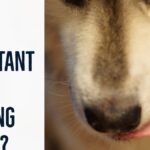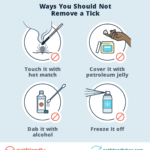Can Dogs Eat Mold
Can Dogs Eat Mold: A Comprehensive Guide
Dogs are known to be man’s best friend. They are loyal, loving, and always there for us. As dog owners, we want to provide our furry friends with the best possible care. This includes feeding them a healthy diet that meets their nutritional needs. But what about mold? Can dogs eat mold? In this article, we will explore this question in detail.
Understanding Mold
Mold is a type of fungus that grows in damp and moist conditions. It can grow on food, plants, and even surfaces such as walls or floors. There are many different types of mold, some of which can be harmful to both humans and animals.
Mold produces spores that can become airborne and can cause respiratory problems if ingested by dogs. Additionally, certain molds produce mycotoxins that can be toxic to dogs. Mycotoxins are toxic substances produced by fungi that can cause illness or death.
Can Dogs Eat Mold?
The short answer is no; dogs should not eat mold. While some types of mold may not be harmful to dogs, it is difficult to determine which ones are safe and which ones are not. Even if the mold itself is not toxic, the mycotoxins it produces can be harmful to your dog’s health.
If you suspect your dog has eaten mold, it is important to monitor them closely for any symptoms of illness. Symptoms can include vomiting, diarrhea, lethargy, loss of appetite, and difficulty breathing. If your dog exhibits any of these symptoms after eating mold, seek veterinary attention immediately.
How Does Mold Affect Dogs?
Mold can affect dogs in several ways. The most common way is through ingestion. When a dog eats moldy food or comes into contact with moldy surfaces, they can ingest mold spores or mycotoxins. These toxins can cause a range of health problems, including respiratory issues, liver damage, and neurological problems.
Additionally, dogs with weakened immune systems or pre-existing health conditions may be more susceptible to the harmful effects of mold. Older dogs and puppies are also at a higher risk of developing complications from mold exposure.
What Should You Do If Your Dog Eats Mold?
If you suspect your dog has eaten mold, it is important to take action immediately. The first step is to remove any remaining mold from your dog’s environment. This includes throwing away any moldy food or toys and cleaning any surfaces that may have come into contact with mold.
Next, monitor your dog closely for any signs of illness. If your dog exhibits any symptoms such as vomiting or diarrhea, seek veterinary attention right away. Your vet may recommend diagnostic tests such as blood work or x-rays to assess the extent of the damage caused by the mold.
Preventing Mold Exposure
The best way to prevent mold exposure in dogs is to keep their environment clean and dry. This includes regularly cleaning food bowls and water dishes, washing bedding and toys, and ensuring that their living space is free from dampness and moisture.
In addition to keeping their environment clean, it is important to feed your dog a healthy diet that meets their nutritional needs. A balanced diet can help boost your dog’s immune system and reduce their risk of developing health problems associated with mold exposure.
Conclusion
In conclusion, while some types of mold may not be harmful to dogs, it is best to avoid feeding them anything containing mold. Mycotoxins produced by certain molds can be toxic to dogs and can cause serious health problems. If you suspect your dog has ingested mold, monitor them closely for any symptoms of illness and seek veterinary attention right away if necessary.
Remember ¨C prevention is key when it comes to protecting your furry friend’s health. Keep their environment clean and dry, feed them a healthy diet, and always be vigilant for signs of illness. With these simple steps, you can help ensure that your dog stays happy and healthy for years to come.



